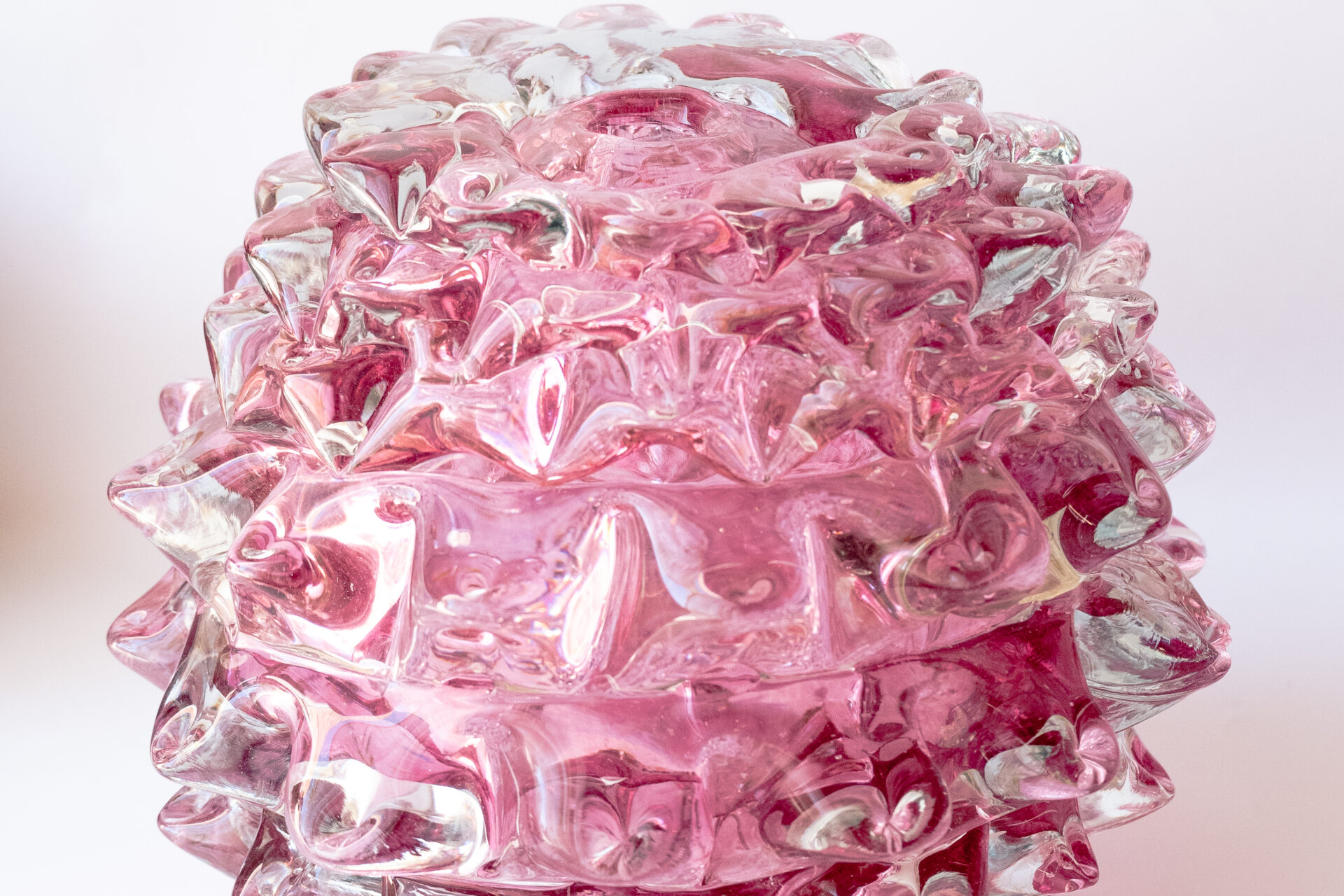Murrino glass has very ancient origins, the first works date back to 3,000-2,000 BC by Syrian, Egyptian and Roman glassmakers. The term “Murrino” was used to identify all the mosaic glass vases and bowls that the Romans made using cane sections that presented inside them, along their entire length, abstract or figurative designs such as faces, flowers and animals. These vases were made of murrha, a material characterized by the presence of Fluorite which gives the objects a particular smell, perhaps due to the resins used as a binder during the process or more likely because they were used to contain perfumes.
During the Middle Ages the murrino glass technique was lost, but was taken up again leter towards the end of the XIX century at the Salviati glassworks by Vincenzo Moretti. Since then the term murrino was remained and is used to identify both the individual sections of the cane and the object obtained from their composition.
To form a simple murrina with overlapping concentric layers, it is necessary in the furncace the presence of crucibles with soft-colored glass of different colors. A worker then takes a small amount of glass from the first crucible on the tip of an iron rod, passing immediately afterwards to cover it with other glass taken from a second crucible. This proceeds by superimposing several layers of different colors: these layers of glass will form all together a cylinder weighing five, six kilograms.
Once the cylinder has been made regular by rolling it over a thick iron or bronze plate, a second iron rod is applied to the free part. Everything then passes into the hands of two other workers, the “tiracanna”, who will stretch the mash to bring it to the programmed diameter. In this case you will get a murrina with concentric circles designs. If the soft glass mash is inserted into a mold with vertical ribs in the shape of a flower, star or heart, you will have a murrina with a floral, star or heart shape.
The obtained sticks (or canes) are used to produce the “mosaic” (or “millefiori”) pearls, plates, bowls or pendants. To make pearls it is necessary to cover the light layer of molten glass wrapped around the iron rod (core) with many slices of these rods and compact them with simple tools while giving the desired shape at the same time.
The use of the copper mold, which can have the most different shape and dimensions, allows to obtain objects that are all perfectly equal to each other, which is impossible without resorting to this system.
Still the murrine are produced by Murano glassmakers according to ancient techniques handed down from generation to generation.
Even the masters of Murano Design glassware follow this ancient tradition by inserting murrinas in their creations.
Murrine glasses in relief and drop
Murrinas handkerchief suspension





